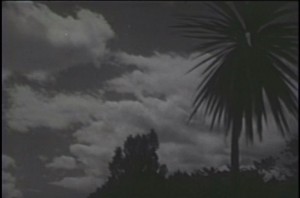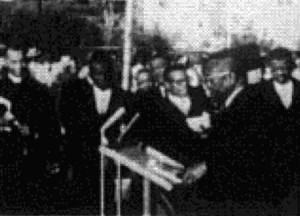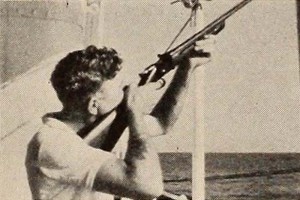
"In Ultima Thule and Peggy's Cove, produced by Edward A. Bollinger, ACL, and Mrs. Bollinger, one finds what must be the ultimate in beautiful scenic photography, magically infused throughout with a sensitive feeling for the relationship of ordinary people to their natural backgrounds. Beyond the veritable perfection of many of the scenes in these pictures it seems impossible for camera and film to go, even when guided by skill and imagination as superb as Mr. and Mrs. Bollinger's. Compositions, cutting and sequence structure are incisive and stirring, while the title wordings and execution leave little to be desired in suave good taste. The two subjects are first and last reels of a four reel study of Nova Scotia, in which, it is understood, Mr. Bollinger has done the camera work and his wife the editing and titling. It is a happy combination, from which have resulted documentary reels of magnificent skill and breathtaking beauty." Movie Makers, Dec. 1935, 550.
Edited film "chronicling travel through the Caribbean including scenic landscapes, cities and villages, dance, local markets and fishing. Wells travelled on the M/s Stella Maris II. Locations filmed include Puerto Rico, Saba St. Kits, Gaudelupe, St. Lucia, Barbados, Paramaribo, Tobago, Trinidad, Grenada, St. Vincent, Dominica, Martinique, Fortress of San Felikpe Del Morrow (San Juan), For Christianvaern, Fort Fleur depee XVIII siecle, and Sam Lord's Castle," Human Studies Film Archives, Smithsonian Museum.
"doc. scientifico-turistico"/scientific-touristic documentary
"Edited film created by Frank L. Kreznar, an award winning amateur filmmaker, with assistance from his wife during a guided tour of the Soviet Union in 1965. Film consists of footage of Moscow and Leningrad mainly of public places with a special emphasis on historically important buildings. Throughout the footage Kreznar shows modern apartment buildings as they are being constructed, with his commentary discussing the Soviets’ efforts to modernize the territories under their control and the recent population growth in these cities. Kreznar is also interested in the modes of public transportation in each city – such as street cars or the metro in Moscow. Kreznar notes that most automobile production in the Soviet Union focuses on trucks for work while cars are considered a rare luxury for private citizens. He also discusses the high volume of pedestrian traffic. Kreznar also takes an interest in religion in this footage, showing churches in disrepair or having been de-sanctified and converted into housing, museums, or other government administrated buildings. Kreznar notes that this is due to the Soviet government’s anti-religious policy, but he also shows some churches under recently started restoration due to the government’s realization of the touristic value of these sites. Film includes occasional shots of people working, mainly in outdoor produce markets. Women are shown doing road construction in Moscow as well as various public parks, swimming pools, and other public recreation areas, with a special emphasis on how the Soviet government has given children places to play," Human Studies Film Archives, Smithsonian Museum.
"Canada 1960." UCLA Film & Television Archive.

"A free and independent country with a form of government patterned after the U.S.A. located on the western part of Africa. Monrovia, its capital city, is modern and has an air of prosperity. There is an active program of new schools, improved teaching, road construction, agricultural development, and training of its defense army. Away from the city, the country is still a land of thatched roofs and scanty clothing, ritual and tribal dances. A fine documentary that tells us also of the economic growth of the country" PSA Journal, Oct. 1962, 33.
"A well done travelogue of Hawaii showing the sports the tourist usually sees, the profusion of flowers, etc." PSA Journal, Nov. 1956, 45.

"Frances Christeson, experienced cinematographer and artist of cine devices, gives us in Log of the Timber Rush the movie diary of a holiday voyage. That the freighter, in which she had booked passage, stripped its gears and was stalled somewhere in the Pacific Ocean, well off the coast of Mexico, upset her film plan but did not stop her. It became part of an amazing personal and movie making experience. But before the misfortune at sea and the long delay of weeks, waiting for help and repairs. Miss Christeson had filmed the loading of the Timber Rush with affectionate attention to detail and the use of fascinating cine symbols. She also had captured sequences of gorgeous quality, framed through ship's gear and depicting the beautiful, lazy clouds of the tropics and the life aboard the vessel. When the gears were stripped and the long period of inaction came, the camerawoman had, as she puts it, "the job of filming nothing happening." She does that as well as possible, and the result is a delightful sea picture marred only by the doldrums of fate." Movie Makers, Dec. 1938, 619.

"Three sequences of street scenes shot in Westminster during the 1930s. The exact date of the film is not known" (EAFA Database).
Total Pages: 44